|
|
|
Книги Vergo Peter

|
«The artistic stagnation of Vienna at the end of the nineteenth century was rudely shaken by the artists of the Secession. Their works at first shocked a conservative public; but their successive exhibitions, their magazine «Ver Sacrum», and their application to the applied arts and architecture soon brought them an enthusiastic following and wealthy patronage. This book traces the course of this development, of the Wiener Werkstatte that followed, and the individual works of the artists concerned. Klimt, Olbrich, Loos and Hoffmann in architecture and applied arts. In other fields Mahler, Freud and Schnitzler were influencing the avant-garde. Peter Vergo quotes extensively from the writings of contemporary reviewers, critics and the artists themselves. He has eye-witness accounts of the exhibitions, the opening of the Secession building, the work in progress on the Palais Stoclet and Kabarett Fledermaus. The result is a documentary study of the successes and failures, hopes and fears of the members of an artistic movement which is still admired today.» |

|
The artistic stagnation of Vienna at the end of the 19th century was rudely shaken by the artists of the Vienna Secession. Their work shocked a conservative public, but their successive exhibitions, their magazine Ver Sacrum, and their application to the applied arts and architecture soon brought them an enthusiastic following and wealthy patronage. Art in Vienna, 1898-1918: Klimt, Kokoschka, Schiele and their Contemporaries, now published in its 4th edition, brilliantly traces the course of this development. Klimt, Kokoschka and Schiele were the leading figures in the fine arts; Wagner, Olbrich, Loos and Hoffmann in architecture and the applied arts. In other fields, Mahler, Freud and Schnitzler were influencing the avant-garde. The book includes eye-witness accounts of exhibitions, the opening of the Secession building and other events, and the result is a fascinating documentary study of the members of an artistic movement which is much admired today. Some 150 colour images and 75 black-and-white archival illustrations make this a sumptuous and historically engrossing study of a period when Vienna was the centre of the European art world. |
|